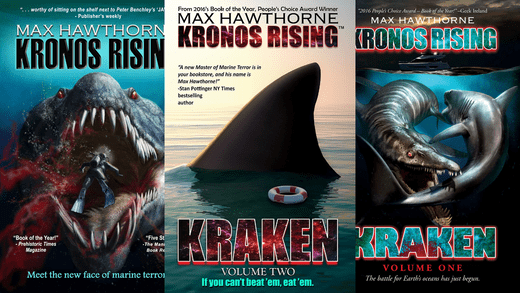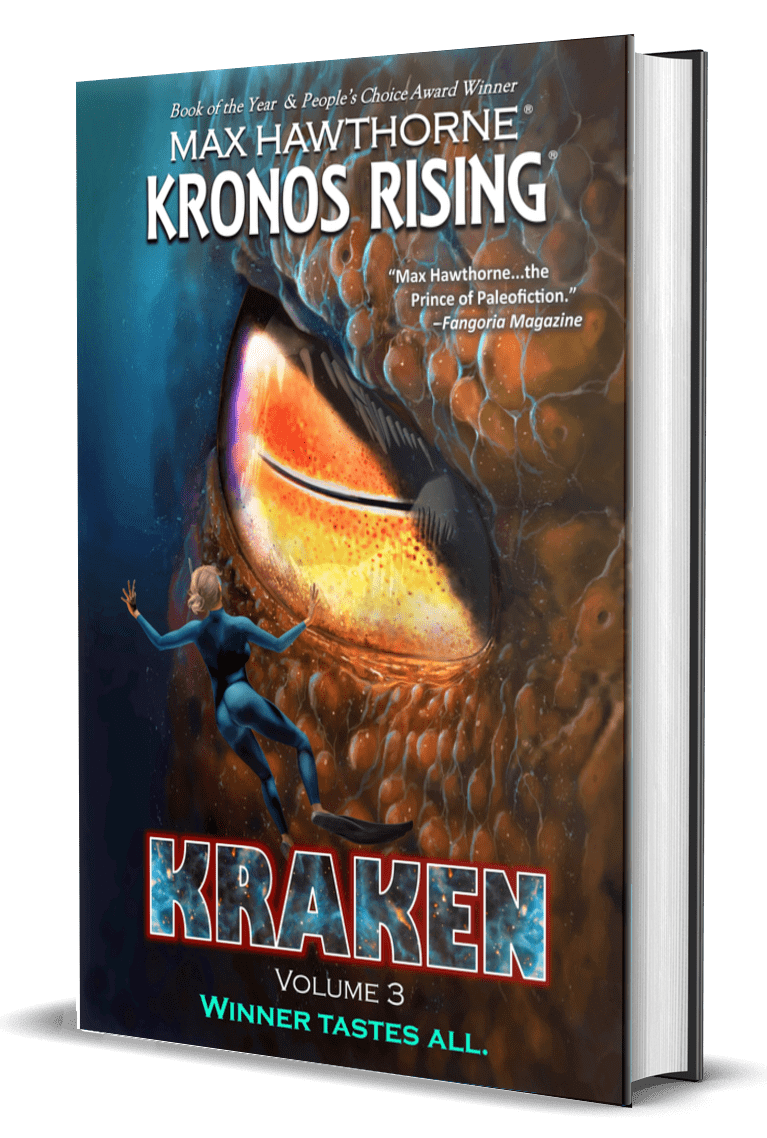My last blog post, Megalodon, history’s mightiest scavenger? caused so much of a stir that I felt it required a revisit. First, let me address the more vocal of naysayers – the ones who, for some strange reason, felt compelled to comment on the article (obviously) without even reading it.
1- Despite what a few fruit loops would have people believe, I hold no “bias” against C. megalodon (or any other life form, extant or extinct). The very concept is laughable. Like any other researcher, I look at extinct marine life from an analytical perspective, combined with common sense. I study the fossil evidence, and any paleo-theories I develop are based on logic and first hand observations. This was the case when I uncovered the reason behind mosasaurs hypocercal tails, the purpose and application of elongated necks in plesiosaurs, and the methodology behind the latter’s four-flippered swimming style.
2- My theory on Megalodon is also not a take on Jack Horner’s infamous 90’s position that Tyrannosaurus rex was nothing more than a scavenger (something now disproved). In fact, if you read the blog post Megalodon, history’s mightiest scavenger?, you see that I never stated C. megalodon was a scavenger. At least not solely. It’s not an either/or, predator vs scavenger type of argument. Physiological changes in the shark’s teeth overwhelmingly suggest that, as it matured, and became bulkier and more cumbersome, it became less of a hunter and more of a carrion eater, until it reached full growth. At that point, it subsisted primarily on whale carcasses, and anything slow and unfortunate enough for it to wrap its seven-foot jaws around. This is an animal that began life as an active predator, until it got to the point it was so massive that it was forced to make a living off of offal.
3- The scientific community appears to be warming up to my “controversial” theory. The Discovery channel recently aired a Megalodon special wherein they calculated the shark’s maximum speed at 15 mph. For a mid-size one, I agree. Also, in a 2018 BBC article titled, “The Meg: the myth, the legend (the science)” shark researcher and Megalodon expert, Dr. Catalina Pimiento, from Swansea University, stated: “If you think about that on land for example, all the largest animals are herbivores… if you’re that big then you need to eat a lot of prey and you need to hunt a lot to find that much food.” For a slow-moving carnivore, a drifting whale carcass is the equivalent of a cow coming across a fresh field of grass – there is no effort required other than finding it. In the same article, she also stated: “If I had to guess, I wouldn’t think it was an agile predator. It could even have been more of a scavenger. Sharks are opportunistic, and they will eat anything they can. If they can hunt, they will hunt. If they see a carcass, they will eat the carcass.”
Now that we’ve cleared that up, let’s revisit the teeth of Megalodon, because some people seem to have missed the point – or lack therein (pun intended). It’s really simple. If you have a mouthful of steak knives, it’s a safe bet you’re biting into steak (and blubber).
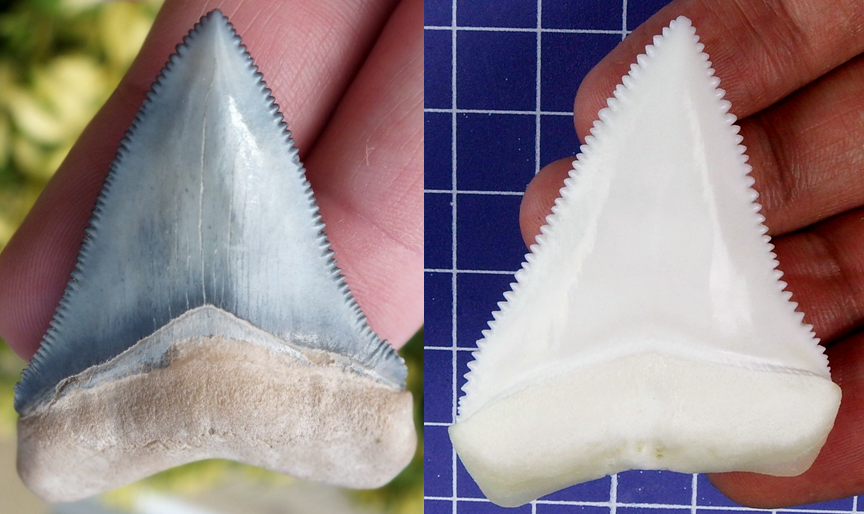
However, if you have a mouthful of stone chisels, you’re biting into stone, or, in organic terms, bone. You don’t need to crunch bones to make a kill; slicing soft flukes and abdominal cavities is a much safer and more effective bet (ask any great white shark). Therefore, if your teeth are like bone chisels, you’re mouth is designed to bite through bone.

We all know that bones aren’t super high in calories or protein, so why bite into them? The answer is to get to what is underneath. This brings us back to an animal feeding on an already stripped carcass and needing to get at the nutritious organs that remain – organs that are hidden underneath those thick, cage-like cetacean ribs. Hence the bone chisels – complete with fine serrations, of course, so they can gouge out hunks of heart and lung once the ribs have been removed. This is supported by the fact that many whale carcasses that show evidence of Megalodon feeding, tend to have their rib cages bitten into. This would be more a matter of getting at the juicy innards than a technique for incapacitating a large and potentially dangerous prey item.
If we compare an adult Megalodon tooth to a steak knife or a chisel – even an archaic flint one – it becomes obvious what their purpose was.
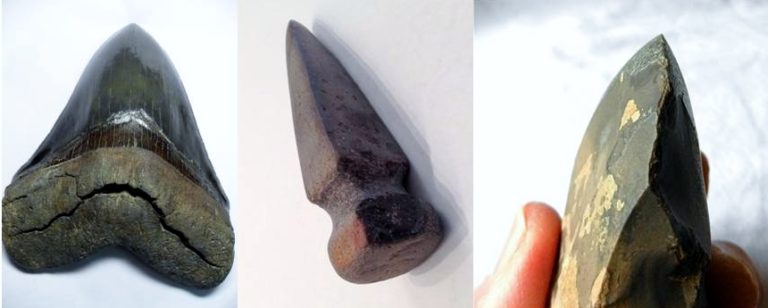
In summary: Adult great white shark or small Megalodon = steak knives for teeth and an active hunter that scavenged as opportunity presented itself. Adult Megalodon = railroad spikes for teeth and an active scavenger that made kills when opportunity allowed. In the end, the teeth tell the tale (or tail).
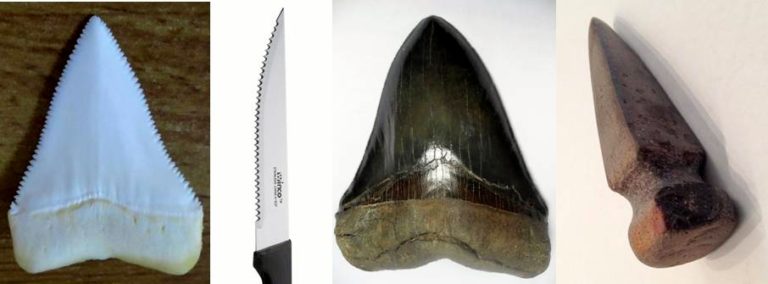
Does this mean Megalodon wasn’t a carnivore? No. Does it mean it wasn’t dangerous? Hell no. If you put a 50-footer in front of a few hundred flailing human beings (say the survivors of a sunken ship) it would go through them like an oceanic lawn mower. But as an active predator it just wasn’t fast or agile enough to keep up with healthy whales. Fortunately for the shark, it was blessed with lots of available whale carcasses that it could appropriate from smaller sharks whenever it was hungry.
Conversely, when whale populations took a hit from natural causes, the brood stock of Megalodons would suffer as well. This was, undoubtedly, a huge contributing factor to the shark’s decline. Coupled with competition from the contemporaneous Livyatan melvillei and other sharks, the reduction or even loss of C. megalodon’s main food supply was (to the best of our knowledge) a one-two punch the world’s largest carnivorous fish could not recover from.
Respectfully,
Max Hawthorne
